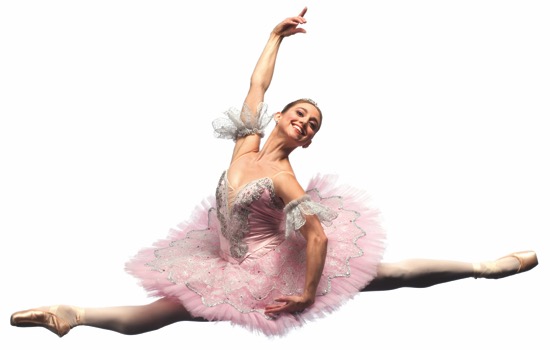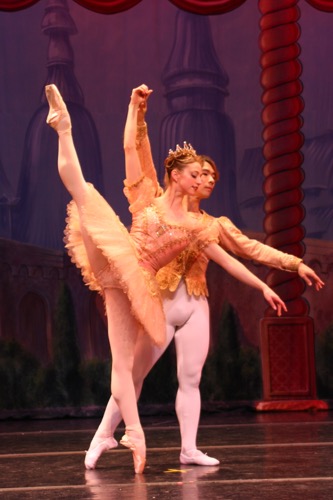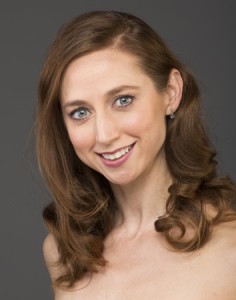
by Sharon Wehner
“What does it mean to you to be celebrating your 20th season with the Colorado Ballet?”
This is a question I have been asked over and over again since our season started this past July—a question asked by my colleagues, by board members, by our marketing department, and by numerous members of the media. I have spent hours pondering it, and each time I am asked, it seems I have a different answer.
It is a big question, and quite honestly, I dread it, because it sends me spinning into a myriad of memories and growth periods—both beautiful ones, and those that were, well, more challenging. My first response is to say that it feels like any milestone birthday. On the one hand, it’s could be viewed as just another number. From a pessimistic perspective, it could be seen as the inevitable passing of time—one year closer to the end. Dancers love to bemoan how old they are getting and how old their bodies feel, a tendency that starts about the age of puberty. But from another perspective, a milestone birthday could be an opportunity to feel blessed—one more year to be able to be and do what I love.
What does it mean to dance for twenty years in the same company? As every dancer knows, choosing this as one’s profession means accepting some unique parameters:
- Dancing is a career with a limited lifespan—retirement does not mean turning 65.5 and collecting a pension. Longevity in one company may earn a small amount of seniority, but nothing like the retirement benefits of a company in the corporate world.
- Being a professional dancer requires a particular lifestyle commitment. Because our body is our bread and butter, what we do outside the “office” affects our ability to be at the top of our game. Simple things like food, sleep, rest, exercise, and play are all intimately connected to our performance. And as the years pass, maintenance on the body becomes an increasingly refined and conscientious balance of these elements.
- Dancing can be a very transient kind of lifestyle. Those who freelance must weave together a patchwork of gigs, supplemented by other kinds of work to pay the bills. They must be able to adapt quickly to new bosses, colleagues, an environments. Even those dancers who want the stability of a company, will often switch companies several times during the span of their careers, for a number of reasons.
Given all of these tendencies, why would someone commit the bulk of their dance career to one ballet company for 20-plus years? When I ask myself this question, there are a multitude of answers, which brings up the question “What are the advantages of such a commitment?”
One thing that should be understood is that I did not actually begin my career with the goal of spending 20 years at the Colorado Ballet. In fact, I really saw the company as more of a stepping stone, a starting place. But the reality is that the Colorado Ballet was also a very different company back in 1995. Had the company itself not grown and evolved, I probably would have left long ago. But, I have had the fortunate experience of actually getting to grow with the company.
Perhaps the best analogy might be to compare it to a relationship. When the two participants are moving in the same direction, have similar values, share mutual respect, are willing to stick together and support each other through the hard times, and are reciprocal in nature—well, it just works.
That’s not to say that I never had “itchy feet.” There was a time, when my personal life was in major transition, that I was sensing the need for a respective professional change too. This was mostly because, even though I was a Principal, I was concerned that my Director would never quite get past the proverbial “box” he had put me in as an artist. I was feeling the need to expand myself outside of the box and wanted fresh eyes on me to see and nurture those potentials. I had an offer from another company, and was about to take it, when suddenly the Colorado Ballet took a major sideways turn. Our Board of Directors had decided the company needed new Artistic Leadership, and the company went through a huge transition. Not only was there a changing of Artistic Guards, but the dancers decided that it was the right time to unionize. I found myself caught up in the negotiations of our first AGMA Contract, and was simultaneously curious about the new Director—both major tipping points in the trajectory of the company.
These events also coincided with the renovation of our old Auditorium Theatre. After several “homeless” years of adapting to less-than-ideal venues, the company finally had a beautiful new 2,225-seat Opera House in which to perform to live orchestra every production. In essence, all of these changes made it felt like I was joining a new company, without having to move! From my perspective it was a win-win situation—an opportunity to be seen with fresh artistic eyes, to experiment with different repertory, and hopefully to grow and re-invent myself. At the same time, I would get to work with the same colleagues, many of whom I have developed life-long friendships with.
This brings up another advantage of holding a long tenure in one place—the ability to forge real bonds with one’s dancer family. I have had the pleasure of dancing with many different partners, some for over fifteen years. The obvious benefit is that you can develop a special rapport that carries each of you through your artistic growth periods. Some relationships exhibit instant chemistry and trust, but often it takes time.
On the flip side, I have witnessed many of my dear colleagues and partners retire or move on, and it’s always a bittersweet good-bye. For example, my first partner, Koichi, was essentially the reason I was hired. I was fresh out of school when we danced our first principal role together, and the thirteen years that followed was a beautiful journey of artistic growth and exploration, memorable moments on stage, multiple trips to Japan together, many recoveries from injuries, all accompanied by key personal life events like each of our marriages, milestone birthdays, the birth of his children, and even divorces. When Koichi finally retired and moved back to Japan to become a director, I felt a palpable hollow in my world. A major chapter of my life ended, and through no choice or act of my own.

But the wonderful thing about chapters ending, is that new ones come ushering in with all sorts of unexpected opportunities. While I had almost exclusively danced with Koichi for the first half of my career, his retirement necessitated that I dance with a multitude of different people, each of whom brought something different out of me, and suddenly I found myself thrilled to negotiate new working relationships in the studio and on stage. Thus, ultimately, my career has been a beautiful balance of consistency and change. The consistency allowed me to feel comfortable in my “home”— enough to take risks and stretch myself beyond my comfort zone. Having a solid foundation beneath me allowed me to grow. At the same time, the changes that did occur—new repertory, new partners, new theatre, new studios (we moved to a new state-of-the-art facility last season), new choreographers, new artistic staff—all of these changes kept things fresh and prevented feelings of stagnation.
Of course, there are always periods in which one feels they are at a plateau, or even moving backwards. These are the times when it is important to question whether the plateau is a product of one’s outer circumstances, or more an effect of one’s inner experience. Although it is crucial to know what options are out there in the world, I’ve always been a bit wary of the “grass is greener” syndrome. I’m a firm believer in the adage that wherever you go, there you are. Sometimes, the truth is that the grass really is greener, but it is important to carefully assess whether the grass is just a different shade of green, and if it is the right shade for your needs. And often, people truly do need variety in order to expand. Luckily, I have had the advantage of using Colorado Ballet as a home base, while using my off-season to dip my pointe shoes in other waters. Having a 33-week contract leaves four solid months out of the year to guest, travel, participate in different dance and academic classes, and work for other companies. These periods of exploration have been a key part in maintaining contentment with my home company.
Looking back at my career, I can marvel at how many different shades of experience I have lived and danced through. From wide-eyed nineteen-year-old fresh out of school, to long-time veteran and everything in between, it’s an interesting exercise to reflect on how my attitude towards dancing has changed, and which aspects are exactly the same. For example, I remember being cast in the Peasant Pas de Deux in Giselle, and watching the principal getting ready for her premier performance–the starring role of Giselle herself. In my mind I thought: “thank goodness that isn’t me—I would be so nervous I would completely fall apart! I never want that kind of pressure!”
Years later, it was me getting ready to dance the iconic role, and I was a nervous mess, but I did not, in fact, fall apart. And years later still, I found myself dancing the role once again. Yes, the nerves came, but this time I felt a greater sense of freedom, coupled by the desire to create a richer experience and greater depth of character. Indeed, re-visiting ballets and roles has been one of my favorite things about my career longevity. It is always so satisfying to approach a familiar ballet with a new perspective and maturity, backed by the confidence of knowing that you’ve already tackled the nerves of premiering it before. Even Nutcracker is a joy for me. I love how it affords the freedom to simply flow in the present moment.
I don’t know if it is a product of being in one company necessarily, or simply of dancing professionally for twenty years, but I think the most remarkable change in perspective from my younger self, is that dancing has taken on a much greater meaning in terms of its relevance in the world, and my role within that space. As a new dancer, your focus is so much about your own dancing, being proficient technically, and proving yourself to the artistic staff and your colleagues. The love of being on stage, and of dance itself must shine through of course, but only after you’ve “hit the mark” technically and choreographically. But as the years go by, you begin to see yourself as an integral thread within the fabric of your ballet company, and ultimately within the macrocosm of society. You begin to pay attention to the children and younger dancers looking to you as an example, to the complete stranger in the audience moved by your performance, to the guy in the coffee shop down the street who needs educating on the performing arts. Suddenly you have a responsibility to your community to be an ambassador of this precious gem we call Dance.
The world of dance has always been small, and social media has played a major role in expanding its visibility and scope. It’s actually a world that I myself am still a bit uncomfortable with. I have always been an introvert at heart, and the stage was my one safe place to be expressive. The idea of posting my status, pictures, updates, comments, likes, etc..to me still feels like an obligatory necessity rather than fun. But ultimately, I love that dance can now easily expand its reach all over the planet, and I love that I have twenty years of experience behind me to share with that world.
So as I contemplate entering my 20th Nutcracker season with the Colorado Ballet, I find myself feeling both grateful and wistful. I still remember my first roles, and think about how I’ve gone through just about every female part in the ballet, finally landing at my current Sugar Plum Fairy status. It is really an honor and a blessing that my body still loves circling around the stage in pointe shoes; that my mind still finds challenge in being present with my partner, the orchestra, and the audience; that my heart still sings to Tchaikovsky’s ubiquitous holiday score.
And really, I wouldn’t mind having twenty years more of it all.
Get tickets for Colorado Ballet’s Nutcracker, running through December 27th.

Contributing writer Sharon Wehner is originally from San Jose, California. She trained with Jody White and David Roxander, San Jose Dance Theatre, San Francisco Ballet and San Jose/Cleveland Ballet. Ms. Wehner joined Colorado Ballet in 1995 and was promoted to Principal in 1999, and in the last 20 years, has performed many lead roles with the Company. These include Kitri in Don Quixote, Giselle in Giselle, Odette/Odile in Swan Lake, Medora in Le Corsaire, Aurora in The Sleeping Beauty, Swanilda in Coppelia, Mina in Dracula, Juliet in Romeo & Juliet, the Cowgirl in Rodeo, the Sugarplum Fairy in The Nutcracker, Cinderella in Cinderella, Esmerelda in The Hunchback of Notre Dame, Titania and Helena in A Midsummer Night’s Dream, Second Violin in Balanchine’s Concerto Barocco, the Principal couple in Balanchine’s Stars and Stripes, Rubies, and Theme and Variations, Antony Tudor’s Leaves are Fading, and Twyla Tharp’s In The Upper Room. She has been honored to have solos and pas de deuxs created on her by choreographers Val Caniparoli, Edwaard Liang, Mathew Neenan, Christopher Wheeldon, Darrel Grand Moultrie, Dwight Rhoden, Jessica Lang, Brian Reeder and Toru Shimazaki.
In addition to Colorado Ballet, Ms. Wehner has also performed with The Washington Ballet, Oakland Ballet and Amy Seiwert’s Imagery. She has also been a guest artist at the Vail International Dance Festival, in Japan in the Aoyama Ballet Festival, and the National Ballet of Japan’s Golden Ballet Co-star. Sharon enjoys teaching dance to all ages and abilities, particularly Dance for Parkinson’s Disease.





Sharon is not only a special dancer, she is also a special person. I have seen her dance for years as a guest for the Burke Civic Ballet. In addition to being a wonderful dancer, she is an incredible role model for all the young girls whose lives she touches every year. We need more people like Sharon.
I remember first seeing Sharon dance with Koichi in Stars and Stripes, and I have been a fan ever since. I’ve had the please of seeing her grown in the company for the past fifteen years and what a beauty she has become. Always humble, strong, pleasant to be around, and a true example of an artistic role model to many. Sharon is absolutely exquisite, and a Colorodo Ballet Gem 🙂
Thanks Terrell, for taking the time to share your thoughts with us!